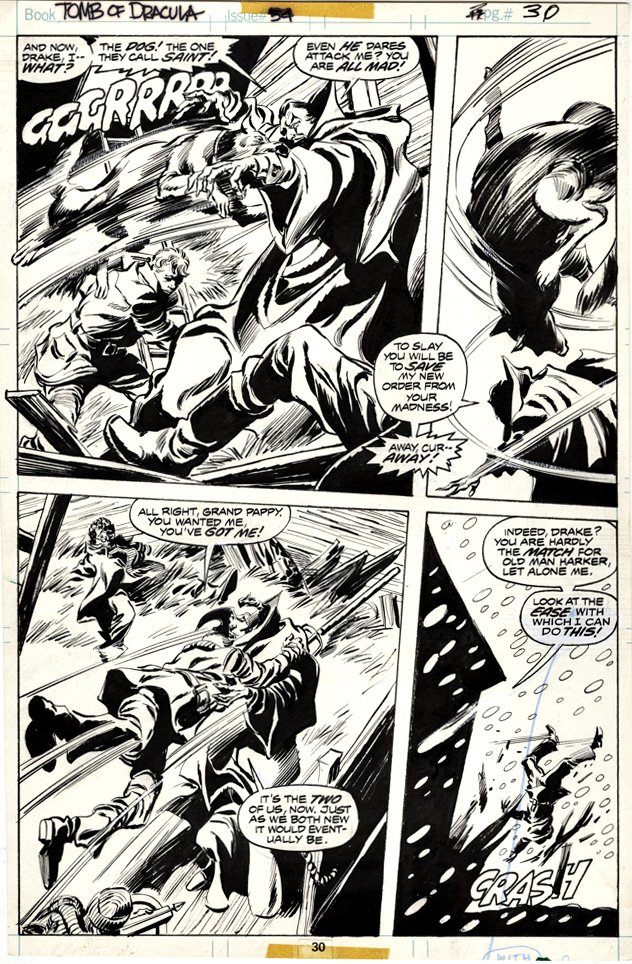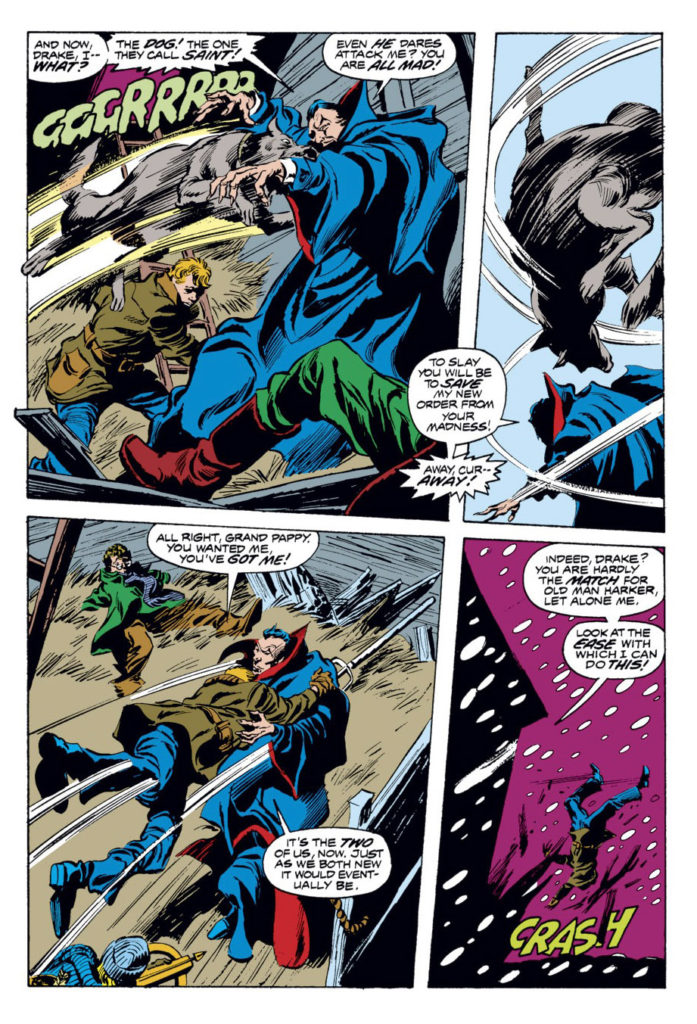Tomb of Dracula #54, March 1976

Continuing a two-week series celebrating Halloween with the best in monsters, mystery and mayhem.
The monsters returned to Marvel in 1972.
But this time, the giant behemoths were mostly relegated to reprint titles. Thanks to a loosening of guidelines by the dreaded Comics Code Authority, new comics featured creatures of the night like werewolves, zombies and of course, vampires.
Marvel’s Tomb of Dracula, written by Marv Wolfman (you can’t make that up) and drawn exquisitely by Gene Colan for 70 issues, is a masterpiece of that era. And, it’s not only a legendary horror series, but also one of the great comic book runs, period.
Colan, the “painter with a pencil, “ made his bones at Marvel on classic superheroes like Iron Man, Captain America, and most notably Daredevil. When Marvel expanded into the horror genre, though, no artist could have been more suited to bring life to the undead Dracula.
The stylist who had mastered the art of shadows and light, was now illustrating the character who hid in those very same shadows.
This moody and dynamic action page is typical of the series. Tom Palmer, who inked all but a handful of early issues, is one of the few who could ink Colan without diminishing — or (ahem) burying altogether — Gene’s pencils.
Colan’s unique style can be polarizing. His fans (and I obviously count myself among them) can be passionate to a fault about Gene’s inventive and atmospheric storytelling. Gene’s singular artistic approach made no attempt to mimic the styles of Marvel’s other star artists, and that represented a challenge to some readers, especially on superhero stories.
But to us, it didn’t detract, or distract, from what Kirby, Romita and Buscema brought to the party. Hell, they were the party. Stan Lee understood from the beginning that Gene’s art would stand on its own. And we appreciated that.
It’s like being an obsessive devotee of art impressionism, and also an enthusiast of Picasso’s cubism. It’s not a contradiction to enjoy both — is it?


